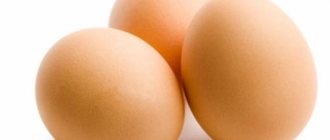Some people believe that carbohydrates, fats and proteins are always completely absorbed by the body. Many people think that absolutely all the calories present on their plate (and, of course, counted) will enter the bloodstream and leave their mark on the body. In reality, everything is different. Let's look at the absorption of each macronutrient separately. Digestion (assimilation) is a set of mechanical and biochemical processes through which the food absorbed by a person is converted into substances necessary for the functioning of the body.
The digestion process usually begins in the mouth, after which the chewed food enters the stomach, where it undergoes various biochemical treatments (mainly protein is processed at this stage). The process continues in the small intestine, where, under the influence of various food enzymes, carbohydrates are converted into glucose, lipids are broken down into fatty acids and monoglycerides, and proteins into amino acids. All these substances, absorbed through the intestinal walls, enter the blood and are distributed throughout the body.
Macronutrient Absorption
Absorption of macronutrients does not last for hours and does not stretch across the entire 6.5 meters of the small intestine. The absorption of carbohydrates and lipids by 80%, and proteins by 50%, occurs throughout the first 70 centimeters of the small intestine.
Absorption of carbohydrates
Different types
of carbohydrates are absorbed differently because they have different chemical structures
. To visualize this difference and the principles of digestion, the main steps for simple and complex carbohydrates are presented in the infographic below.
| How and why does the rate of absorption of different carbohydrates differ? |
| The glycemic index (GI) is a system for classifying the glycemic potential of carbohydrates in various foods on a scale of 1 to 100 according to how much they raise blood sugar levels after consumption. |
A high glycemic index of a product means that as a result of its digestion, the rise in blood glucose levels will be significant. low glycemic index indicates that its absorption by the body will change the blood glucose level slightly.
| A diet based on low GI foods is extremely effective for people with diabetes. |
In order to determine the glycemic index of a product, take a portion containing 50 g or 25 g of carbohydrate to be digested (i.e., all indigestible carbohydrates in the product are subtracted). These products are usually offered to a group of 8-10 people who have not eaten since the day before (i.e., have been fasting overnight). Blood sugar measurements (using a finger prick method) are taken at intervals of 15-30 minutes for two hours.
The measurement results allow you to reproduce a graph (see picture), in which the entire area under the resulting curve reflects the overall increase in blood sugar levels. This value is divided by the number obtained from the standard (glucose or white bread) and multiplied by 100 to obtain a percentage value.
In the graph you can see how foods with different GI values change blood glucose levels after consumption. A breakfast with a high glycemic index has a high peak in the rise in glucose levels, while a breakfast with a low GI has a flatter curve.
It is important to note that peak glycemia occurs at approximately the same time for all types of carbohydrates, regardless of whether their molecule composition is complex or simple.
Thus, the popular concepts of fast and slow carbohydrates are not correct. Many studies have shown that in the original theory, the rate of glucose entering the blood was mistakenly taken for the rate of digestion, which actually differs between different carbohydrates.
Over the past three decades, researchers have measured the glycemic index of several thousand foods.
It is important to understand that the glycemic index is not a constant value.
. Its value depends on a number of parameters: origin, variety and variety of the product (for cereals, fruits), degree of ripening (for fruits), thermal and hydrothermal treatment, type of product processing (crushing, grinding to flour), as well as the individual characteristics of each person’s body and other factors.
The glycemic index of certain foods may also depend on what they are eaten with.
. Olive oil or something acidic, such as vinegar or lemon juice, can slow down the conversion of starch to sugar and thus lower the glycemic index.
| It makes no sense to look at just one parameter; it is necessary to look at the picture holistically. |
“Some foods (eg carrots, watermelon) have a high GI, but a standard serving contains so few carbohydrates that the effect on blood sugar levels is negligible. Others (such as soda) have a moderate GI because they contain enough fructose, which has a relatively minor effect on blood sugar. But they can also contain large amounts of glucose, which raises blood sugar levels,” warns Dr. Frank Hu, professor of nutrition and epidemiology at the Harvard School of Public Health.
What you need to know
Both animal and plant foods contain protein.
There is still debate about which product is better to consume, animal or plant origin.
If we talk specifically about protein, then there is no big difference between these products; it’s a completely different matter when it comes to proper food intake, which involves the full intake of all the substances it needs into the body.
Therefore, before you create a menu, you need to make sure that it includes products that will provide the body with everything it needs. In addition, it is necessary to take into account the ratio of fats and carbohydrates, since different products can contain the same amount of proteins, but at the same time have different fat content.
Glycemic load
In addition to GI, nutritionists also proposed to take into account the glycemic load of foods (GL)
.
Glycemic load (GL) takes into account both the GI of a product and the amount of carbohydrates in it. Often foods with a high GI will have a low GI. Formula for calculating GN:
Example:
- Ready zucchini (GI=75). GN = 75*4.9/100 = 3.68.
- Wheat bagel (GI=72). GN = 72*58.5/100=42.12.
Scale of GBV levels:
- GN≤10
– minimum level; - GN = 11-19
- moderate level; - GN ≥20
– increased.
In recent years, an opinion has emerged in the scientific community about the need to revise the assessment of GI.
Research shows that GI and GN are not sufficiently reliable criteria for selecting carbohydrate-containing products, since they do not allow high accuracy
optimize glucose levels when planning your diet.
MISTAKE #2. REGULAR OVEREATING
There is nothing worse for protein digestion than throwing a disproportionate amount of food into your stomach. If you want to erase all your achievements in protein consumption once and for all, start eating infrequently and in large quantities. Excuses for a difficult daily routine, rush jobs at work and eternal busyness do not in any way affect the digestive activity of your stomach. He doesn’t really care how busy a person you are - the stomach digests exactly as much as the gastric juice and enzymes secreted by the pancreas are enough for.
Therefore, immediately forget about the option of eating half a kilogram of food 2 times a day. It is not for nothing that nutritionists and nutrition consultants promote a fractional diet (4-5 times a day), since it is under this regime that food is digested best and protein dishes, in particular. Train yourself to eat more often, but less, and everything will immediately improve.
Don’t know how to adjust your diet and start eating 5-6 times a day without compromising your figure? Then take a nutrition course.
Glycemic index of foods and weight loss
There is ample scientific evidence that nutritional systems based on low GI foods can have a positive effect on weight loss. There are many biochemical mechanisms that are involved in this, but we will name the most relevant for us:
- Low GI foods make you feel more full than high GI foods.
- After consuming foods with a high GI, insulin levels rise, which stimulates the absorption of glucose and lipids into muscles, fat cells and the liver, while simultaneously stopping the breakdown of fats. As a result, the level of glucose and fatty acids in the blood drops, and this stimulates hunger and more food intake.
- Foods with different GIs have different effects on fat breakdown during rest and during sports training. Glucose from low GI foods is not as actively stored in glycogen, but during exercise, glycogen is not burned as actively, which indicates an increased use of fats for this purpose.
| Why is whole wheat preferable to wheat flour? |
- The more crushed the product is (mostly grains), the higher the GI of the product.
- The more fiber a product contains, the lower its GI.
The differences between wheat flour (GI 85) and wheat grain (GI 15) fall under both of these criteria. This means that blood glucose levels rise more sharply after eating flour than after eating whole grains such as bulgur or spelt.
| Why do we recommend beets and other high GI vegetables? |
- The more fiber a product contains, the lower its GI.
- The amount of carbohydrates in a product is no less important than GI.
Beets are a higher fiber source of carbohydrates than flour. Although it has a high glycemic index, it is low in carbohydrates, meaning it has a lower glycemic load. In this case, despite the fact that its GI is the same as that of a grain product, the amount of glucose entering the blood will be much less. When we compare whole crops to processed ones, it is important to remember all the micro and phytonutrients that are present in natural foods that are not found in industrially processed foods.
| Why is it better to eat fresh vegetables than boiled ones? |
- The GI of raw vegetables and fruits is lower than that of cooked ones.
This rule applies not only to carrots, but also to all vegetables with a high starch content, such as sweet potatoes, potatoes, beets, etc. During cooking, a significant part of the starch is converted into maltose (a disaccharide), which is very quickly absorbed.
| Therefore, the GI of cooked foods is significantly higher than that of raw foods. |
Therefore, it is better not to boil even boiled vegetables, but to ensure that they remain whole and firm. However, if you have diseases such as gastritis or stomach ulcers, it is still better to eat cooked vegetables.
| Why do we recommend adding vegetables to proteins? |
- The combination of proteins with complex carbohydrates reduces the GI portion.
Vegetables contain dietary fiber and complex carbohydrates, which are not absorbed by the body, but are very important for effective digestion. Additionally, adding protein to any type of carbohydrate will lower the overall GI of the dish.
| Why is it better to eat an apple than to drink apple juice? |
Natural products, unlike juices, contain fiber and thereby lower the GI. Moreover, it is advisable to eat fruits and vegetables with the skin, not only because the skin contains fiber, but also because most of the vitamins are located directly on the skin.
How much protein does the body really need?
The basic rate of the nutrient in question is 0.8 grams per 1 kg of human weight and this calculation is only suitable for an adult, healthy person. If you weigh 68 kg, you will need to eat at least 54 g of the element per day, but this amount will only be enough to prevent its deficiency. If a person with the same 68 kg is actively involved in sports, regularly trains or does heavy physical work, then he will need about 135 g of the substance per day (about 2 g per kilogram of weight).
The indicated indicators are the amount of protein that must be consumed per day. But it is necessary for the normal functioning of organs, energy, and physical activity.
Protein absorption
The process of digesting proteins requires increased acidity in the stomach. Gastric juice with high acidity is necessary to activate the enzymes responsible for the breakdown of proteins into peptides, as well as for the primary dissolution of food proteins in the stomach. From the stomach, peptides and amino acids enter the small intestine, where some of them are absorbed through the intestinal walls into the blood, and some are further broken down into individual amino acids.
To optimize this process, it is necessary to neutralize the acidity of the gastric solution, and the pancreas is responsible for this, as well as the bile produced by the liver and necessary for the absorption of fatty acids.
Proteins from food are divided into two categories: complete and incomplete.
Complete proteins are proteins that contain all the amino acids necessary (essential) for our body. The source of these proteins is mainly animal proteins, i.e. meat, dairy products, fish and eggs. The exception is soy protein, which is similar in amino acid composition to meat protein. Among cereals, the leader in the content of essential amino acids is quinoa.
Incomplete proteins contain only a portion of the essential amino acids. It is believed that legumes and cereals themselves contain incomplete proteins, but their combination allows us to get all the essential amino acids.
| Therefore, in order for the body to receive all the necessary elements, i.e. the entire spectrum of essential amino acids, it is necessary to eat a varied diet. |
In many national cuisines, the correct combinations leading to adequate protein consumption arose naturally. Thus, in the Middle East, pita with hummus or falafel (wheat with chickpeas) or rice with lentils is common; in Mexico and South America, rice is often combined with beans or corn.
One of the parameters that determines protein quality is the presence of essential amino acids . In accordance with this parameter, there is a product indexing system.
For example, the amino acid lysine is found in small quantities in cereals, and therefore they receive a low score (cereals - 59; whole wheat - 42), and legumes contain small amounts of the essential methionine and cysteine (chickpeas - 78; beans - 74; legumes – 70). Animal proteins and soy receive a high rating on this scale, as they contain the necessary proportions of all essential amino acids (casein (milk) - 100; egg white - 100; soy protein - 100; beef - 92).
| Nutritional density is determined by the amount of energy (calorie content) of a food per gram of weight. Fried potatoes have a higher nutritional density than tomatoes. |
| The nutritional value of a product is an index that determines the amount of beneficial nutrients relative to energy density. Condensed milk has lower nutritional value than oatmeal, although they have the same calorie content. |
In addition, it is necessary to take into account the protein composition , their digestibility from a given product, as well as the nutritional value of the entire product (the presence of vitamins, fats, minerals and calorie content). For example, a hamburger will contain a lot of protein, but also a lot of saturated fatty acids, so its nutritional value will be lower than that of a chicken breast.
Proteins from different sources and even different proteins from the same source (casein and whey protein) are utilized by the body at different rates [5].
Nutrients from food are not 100% digestible. The degree of their absorption can vary significantly depending on the physicochemical composition of the product itself and the products absorbed simultaneously with it, the characteristics of the body and the composition of the intestinal microflora.
conclusions
There is no point in worrying about how much protein your body can absorb in one meal. There is currently no evidence that there is a threshold for protein absorption, and much evidence that the body can absorb all the nutrients you supply.
The biggest difference between high-protein and low-protein foods on your plate is how long it takes to digest them. If a lot of protein was eaten at one time, it will remain in the intestines longer until it is absorbed, because it is a very valuable material for the body. So you can eat more than 30 grams of protein at one time.
Digestion of fats
Fat entering the body passes through the stomach almost intact and enters the small intestine, where there are a large number of enzymes that convert fats into fatty acids. These enzymes are called lipases. They function in the presence of water, but this is problematic for fat processing, since fats do not dissolve in water.
In order to be able to utilize fats, the body produces bile. Bile breaks up fat clumps and allows enzymes on the surface of the small intestine to break down triglycerides into glycerol and fatty acids.
Transporters for fatty acids in the body are called lipoproteins . These are special proteins that are capable of packaging and transporting fatty acids and cholesterol throughout the circulatory system. Next, fatty acids are packaged in fat cells in a fairly compact form, since their assembly (unlike polysaccharides and proteins) does not require water [9].
The proportion of fatty acid absorption depends on the position it occupies relative to glycerol. Those fatty acids that occupy the P2 position are absorbed better. This is due to the fact that lipases have different degrees of effect on fatty acids depending on the location of the latter.
Not all fatty acids supplied with food are completely absorbed by the body, as many nutritionists mistakenly believe. They may not be partially or completely absorbed in the small intestine and may be excreted from the body.
For example, in butter, 80% of fatty acids (saturated) are in the P2 position, that is, they are almost completely absorbed. The same applies to fats that are part of milk and all dairy products that do not undergo the fermentation process.
The fatty acids present in mature cheeses (especially long-aged cheeses), although saturated, are still located in the P1 and P3 positions, which makes them less absorbable.
In addition, most cheeses (especially hard ones) are rich in calcium. Calcium combines with fatty acids to form “soaps” that are not absorbed and are excreted from the body. The ripening of cheese promotes the transition of its fatty acids to the P1 and P3 positions, which indicates their weak absorption [10].
We write in more detail about the types of fats and their characteristics in the article “Fats”.
Authors: Elena Degtyar, PhD; Kardakova Maria, MSc
Literature
1. Mann (2007) FAO/WHO Scientific Update on carbohydrates in human nutrition: conclusions. European Journal of Clinical Nutrition 61 (Suppl 1), S132–S137 2. FAO/WHO. (1998). Carbohydrates in human nutrition. Report of a Joint FAO/WHO Expert Consultation (Rome, 14–18 April 1997). FAO Food and Nutrition Paper 66 3. Holt, S. H., & Brand Miller, J. (1994). Particle size, satiety and the glycemic response. European Journal of Clinical Nutrition, 48(7), 496–502. 4. Jenkins DJ (1987) Starchy foods and fiber: reduced rate of digestion and improved carbohydrate metabolism Scand J Gastroenterol Suppl.129:132-41. 5. Boirie Y. (1997) Slow and fast dietary proteins modulate postprandial protein accretion differently. Proc Natl Acad Sci US A. 94(26):14930-5. 6. Popkin, BM (2012) Global nutrition transition and the pandemic of obesity in developing countries. Nutrition reviews 70 (1): pp. 3 -21. 7. Your Meta Body's bolism 8. About Glycemic Index 9. International table of glycemic index and glycemic load values: 2002 10. Jenkins, DJ, Wolever, TM, Taylor, RH, Barker, H., Fielden, H., Baldwin, J. M., ... & Goff, D. V. (1981). Glycemic index of foods: a physiological basis for carbohydrate metabolism. The American journal of clinical nutrition, 34(3), 362-366. 11. How to use the GI table when creating a menu for diabetics.
MISTAKE #5. INSUFFICIENT AMOUNT OF WATER IN THE DIETE
Failure to comply with the correct drinking regime leads to many problems, including deterioration in protein absorption. Without the right amount of water, protein digestion becomes difficult.
Remember that a person should drink 30-40 ml of water per kg of body weight per day. In hot weather and increased physical activity, this amount increases by another 500-800 ml per day.
In this case, you need to drink water half an hour before meals and an hour after meals. Drinking water or other liquids during meals dilutes the gastric juices and thereby impairs the process of digesting food. Protein products are already difficult to digest, therefore, under unfavorable digestive conditions, the prognosis for the absorption of proteins will be very sad.
Do you want to protect yourself from such mistakes and unpleasant consequences? Then take advantage of the consultation of a nutritionist, whose course is aimed at prescribing the most balanced diet for you, and not forcing you onto yet another diet.











